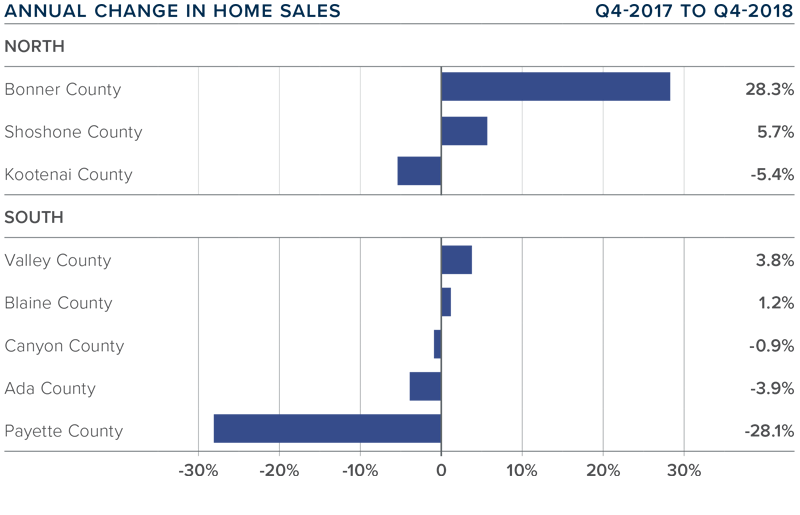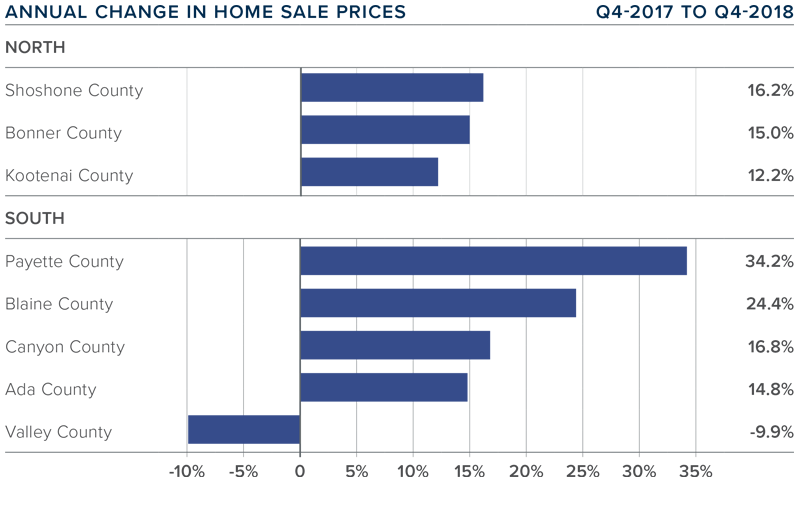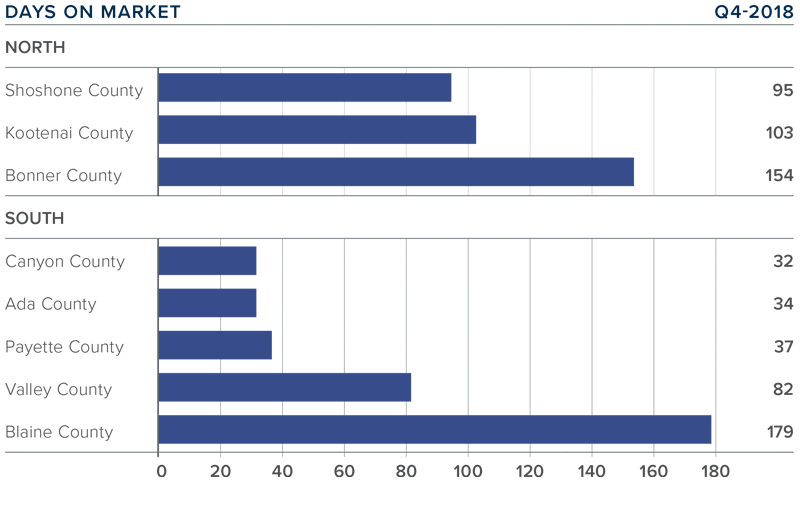The following analysis of select counties of the Idaho real estate market is provided by Windermere Real Estate Chief Economist Matthew Gardner. We hope that this information may assist you with making better-informed real estate decisions. For further information about the housing market in your area, please don’t hesitate to contact your Windermere agent.
ECONOMIC OVERVIEW
Job growth in Idaho slowed in the fall of 2018 but the state added 13,200 new jobs over the past 12 months, representing an annual growth rate of 1.8%.
In November, the state unemployment rate was 2.6%, down from 3% a year ago. The state remains at full employment, which explains why we are seeing a slowdown in employment growth. I fully anticipate that the state will return to above-average growth in 2019 and continue its trend of adding jobs at well above the national pace.
HOME SALES ACTIVITY
- 5,308 homes were sold during the fourth quarter of 2018, representing a drop of 3% compared to the final quarter of 2017.
- In Northern Idaho, sales rose fastest in Bonner County, where they were up a substantial 28.3% over the fourth quarter of 2017. There was a more modest increase in Shoshone County and a drop in sales in Kootenai County. In Southern Idaho, we saw modest sales growth in Valley and Blaine counties, modest declines were seen in Canyon and Ada counties, and there was a significant decline in sales in the small Payette County.
- Year-over-year sales growth was positive in two of three of the Northern Idaho markets, but only two of five counties in Southern Idaho saw sales increase relative to the same period a year ago.
- The slowdown in sales is likely due to persistently low levels of inventory, as well as the bump in interest rates in December. I believe that sales activity will pick back up this spring.

HOME PRICES

- The average home price in the region rose 14.9% year over year to $335,233.
- In Northern Idaho, Shoshone County led the market with the strongest annual price growth. Bonner and Kootenai counties also saw solid, double-digit growth. In Southern Idaho, small Payette County saw prices rise a very significant 34.2%, but this is an anomaly.
- There were price increases in all but one county compared to the fourth quarter of 2017. The outlier was Valley County, which saw sales prices drop by 9.9%. But Valley is a relatively small market and can be prone to significant swings.
- I contend that limited inventory continues to drive up home prices at above-average rates. I am hopeful we will see listings increase in the spring of 2019 and this should take some of the heat out of the market.

DAYS ON MARKET
- It took an average of 73 days to sell a home in Northern Idaho and 117 days in the southern part of the state covered by this report.
- The average number of days it took to sell a home in the region dropped eight days compared to the fourth quarter of 2017 but was up by ten days from the third quarter of 2017.
- In Northern Idaho, it took less time to sell a home in Shoshone County, but market time rose in the other two counties covered by this report. In Southern Idaho, market time dropped across the board.
- Homes again sold the fastest in Canyon and Ada counties, where it took an average of 32 and 34 days, respectively.

CONCLUSIONS

The speedometer reflects the state of the region’s real estate market using housing inventory, price gains, home sales, interest rates, and larger economic factors.
Job growth has slowed in Idaho, but all indicators point to 2019 being another solid year of economic and, therefore, job growth. And as we all know, employment growth leads to demand for housing. Although we have seen slowing sales, I believe this is mainly due to low levels of inventory as well as rapidly rising home prices.
I expect to see the number of homes for sale rise in the spring of 2019 and for home price growth to soften, but only modestly. However, until that happens, it remains a sellers’ market, so I have moved the needle just a little more toward home sellers.

As Chief Economist for Windermere Real Estate, Matthew Gardner is responsible for analyzing and interpreting economic data and its impact on the real estate market on both a local and national level. Matthew has over 30 years of professional experience both in the U.S. and U.K.
In addition to his day-to-day responsibilities, Matthew sits on the Washington State Governor's Council of Economic Advisors; chairs the Board of Trustees at the Washington Center for Real Estate Research at the University of Washington; and is an Advisory Board Member at the Runstad Center for Real Estate Studies at the University of Washington where he also lectures in real estate economics.
 Facebook
Facebook
 X
X
 Pinterest
Pinterest
 Copy Link
Copy Link



